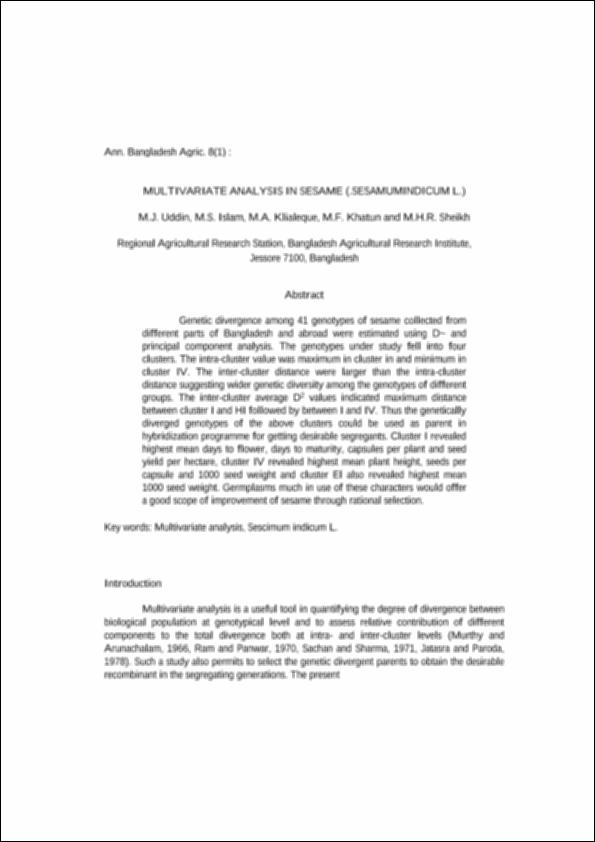| dc.contributor.author | Uddin, M.J. | |
| dc.contributor.author | Islam, M. S. | |
| dc.contributor.author | Klialeque, M.A. | |
| dc.contributor.author | Khatun, M.F. | |
| dc.contributor.author | Sheikh, M.H.R. | |
| dc.date.accessioned | 2021-03-04T04:16:39Z | |
| dc.date.available | 2021-03-04T04:16:39Z | |
| dc.date.issued | 1998-06 | |
| dc.identifier.uri | http://publications.bsmrau.edu.bd/handle/123456789/982 | |
| dc.description.abstract | Abstract:
Genetic divergence among 41 genotypes of sesame collected from different parts of Bangladesh and abroad were estimated using D~ and principal component analysis. The genotypes under study fell into four clusters. The intra-cluster value was maximum in cluster in and minimum in cluster IV. The inter-cluster distance were larger than the intra-cluster distance suggesting wider genetic diversity among the genotypes of different groups. The inter-cluster average D2 values indicated maximum distance between cluster I and HI followed by between I and IV. Thus the genetically diverged genotypes of the above clusters could be used as parent in hybridization programme for getting desirable segregants. Cluster I revealed highest mean days to flower, days to maturity, capsules per plant and seed yield per hectare, cluster IV revealed highest mean plant height, seeds per capsule and 1000 seed weight and cluster El also revealed highest mean 1000 seed weight. Germplasms much in use of these characters would offer a good scope of improvement of sesame through rational selection. | en_US |
| dc.description.sponsorship | BSMRAU | en_US |
| dc.language.iso | en | en_US |
| dc.publisher | BSMRAU | en_US |
| dc.relation.ispartofseries | vol-1; | |
| dc.subject | Multivariate analysis | en_US |
| dc.subject | Sescimum indicum L | en_US |
| dc.title | Multivariate analysis in sesame (.sesamumindicum l.) | en_US |
| dc.type | Article | en_US |

